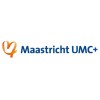
Dietary Intervention, Gestational Weight Gain and Gestational Diabetes.
Dietary HabitsGestational Diabetes2 moreThe aim of this pilot study is to conduct a dietary intervention for overweight (body maas index BMI≥25) and obese (BMI≥30) pregnant women in two maternity care clinics and explore the effect of the intervention on gestational weight gain and the prevalence of gestational diabetes between the intervention and control groups.

Daily Self-weighing and Holiday-associated Weight Gain in Adults
ObesityBackground: Previous studies report 0.4-1.5kg of weight gain during the holiday season, which may contribute to annual weight gain. Purpose: To test whether daily self-weighing (DSW) can prevent holiday weight gain. Hypothesis: We hypothesized that daily self-weighing would effectively prevent weight and fat gain, and that individuals with overweight and obesity would respond most favorably to DSW.

Mental Health in Dancers; an Intervention Study
Mental Health ImpairmentMental Health8 moreInternational studies reveal high prevalence of eating disorders (ED) and mental health issues amongst professional dancers, and the Norwegian National Ballet's house previously (2005) reported a lifetime prevalence of ED by 50% amongst female ballet dancers. Mental health issues and ED have been acknowledged for several years in most sports; still the same do not apply to dance sports. The objective of this study is to improve the knowledge on prevalence of mental health issues in professional dancers and the corresponding awareness of such among dance teachers. Additional objectives are to evaluate the effect of an intervention aimed to improve knowledge on nutrition, recovery strategies and mental health literacy among professional dancers and their teachers.

Low-contrast Dose Liver CT Using Lean Body Weight Low Monoenergetic Images and Deep Learning-based...
CarcinomaHepatocellular1 moreThis study aims to assess whether the acceptable image quality is achievable using low monoenergetic imaging of dual-energy CT with deep learning-based denoising, and low contrast media dose calculated based on lean body weight for the detection of hepatocellular carcinoma.

Cognitive Distraction on Food Intake: Randomized Crossover Exploratory Study
ObesityWeight1 moreThis study determined effects of a cognitive distraction on amount, preference, and memory of food consumed and perceptions of fullness, hunger, and enjoyment of food in a healthy young-adult population. A randomized controlled crossover study of 119 healthy adults, assigned to begin in either the distracted or control condition, was conducted.

Impact of Volunteer Peer-Led Intervention for Weight Control in Primary Care
Weight LossThe specific objective of this research proposal is to determine the short-term efficacy of a primary care-based weight control intervention in which successful volunteer peers deliver a group-based program. The purpose of the study is to conduct a pilot randomized controlled trial (RCT) of a successful volunteer peer-led weight control program compared to a control condition to determine intervention efficacy at 3 months. Six peer leaders from 2 primary care clinics will be recruited and trained to conduct the intervention. Overweight and obese patients (n=80) will be recruited (randomized by individual) to determine weight loss at 3 months (primary outcome). The program consists of 12 weekly weight loss sessions led by a successful volunteer peer leader using an adaptation of the Diabetes Prevention Program to help participants lose weight.

The IBEP Study: an Intervention for Lifestyle Modification in Women With Gestational Diabetes
Gestational DiabetesWeight Gain During Pregnancy1 moreThe IBEP study is a randomized control trial of a healthy lifestyle intervention program for women with gestational diabetes. The primary aim of the study is to evaluate whether women with gestational diabetes enrolled in an intensive behavioral educational program (IBEP) demonstrate lower mean fasting glucose levels measured by 2 hour 75 gram oral glucose tolerance test (OGTT) at 6 weeks postpartum compared to women with gestational diabetes who undergo routine gestational diabetes education and counseling.

Lactobacillus Reuteri for Prevention of Necrotizing Enterocolitis in Very Low-birth Weight Infants...
Necrotizing EnterocolitisVery Low Birth Weight InfantsProbiotics are favorable microorganisms that regulate the flora of the gastrointestinal system and stimulate the immune system. Necrotizing enterocolitis incidence is 10-25% in newborn infants whose birth weights are < 1500 g. Although bifidobacterium and other lactobacilli spp. have been used to reduce the incidence of necrotizing enterocolitis in clinical trials, Lactobacillus reuteri has not been used in the prevention of necrotizing enterocolitis in very low birth weight infants yet. The objective of this study is to evaluate the efficacy of orally administered Lactobacillus reuteri in reducing the incidence and severity of necrotizing enterocolitis in very low birth weight infants.

An Adipocyte-Driven Mechanism For Weight Regain After Weight Loss: The Yo-Yo Effect
ObesityWeight Loss1 moreAlmost half of the Dutch population is currently characterized by overweight and obesity. Losing weight is not the problem in obesity treatment, it is the seemingly obligatory weight regain after weight loss: the yoyo-effect. The primary objective of this study is to investigate the association between the weight-loss-induced cellular stress response and the rate of weight regain. The secondary objective is to investigate the differences in cellular stress response and weight regain after rapid and slow weight loss. To investigate this, subjects will receive meal replacements replacing either all or part of the daily meals during the intervention period. THe first group will consume 500 kcal/d diet for 5 weeks while the second group consumes a 1250 kcal/d diet for 3 months, both followed by 1 week normalization and a 2 week strict weight maintenance diet. During the 9-month follow-up period subjects will receive dietary advice according to the Dutch recommendations for healthy eating. The association between the amount of weight regain after the weight loss period and changes in adipokines, parameters of adipocyte metabolism, in vivo adipose tissue metabolism, adipocyte extracellular matrix gene expression profiles, adipocyte stress protein expression and gene polymorphisms in selected genes.

Appropriate Gestational Weight Gain in Overweight/Obese Women
Gestational Weight GainThe goal of this trial is to investigate the efficacy of a lifestyle intervention of healthy diet and physical activity for helping overweight/obese pregnant women to achieve appropriate gestational weight gain (GWG) for their prepregnancy body mass index (BMI). The goal of the intervention is to help women achieve the lower bound of the GWG range recommended by the Institutes of Medicine (IOM) for a given prepregnancy BMI category (i.e., 11 lbs for obese women and 15 lbs for overweight women). The lifestyle intervention will be delivered via 2 in-person counseling sessions and 11 telephone contacts with study dieticians trained in motivational interviewing techniques. The lifestyle intervention will be compared to usual medical care. Outcomes will be assessed by trained study personnel at approximately 10 weeks and 32 weeks gestation, within several days of delivery and at 6 months and 12 months postpartum.
